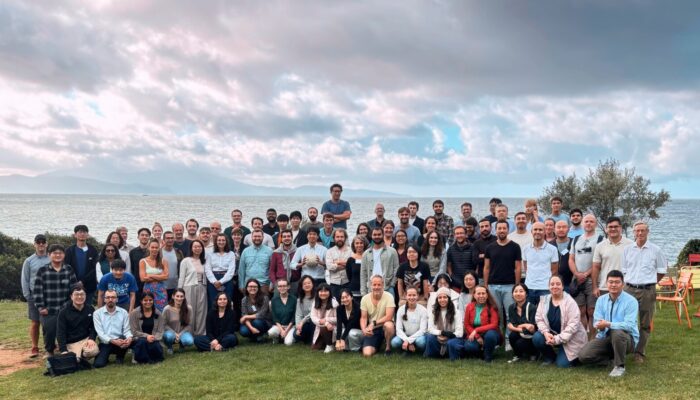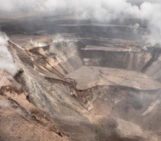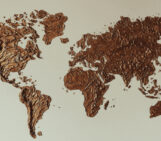
How do earthquakes nucleate? How do they arrest? Can we predict or control them? How do fault zone structure and rheology influence rupture? What do earthquakes in the lab tell us? How does fluid injection modulate seismicity? The Institut des Etudes Scientifiques de Cargèse (IESC) premise in Corsica, France was abuzz with discussions about these and many other related questions this October. The 4th Cargèse school on earthquakes held from 14 – 18 October at IESC welcomed participants from institutions around the globe. The school provided an immersive environment to understand what we currently know and don’t know about earthquakes with its mix of talks, poster sessions, tutorials, and group discussions. In the following paragraphs, I highlight some interesting topics and questions discussed during each session of the school.
The Complete Slip Spectrum
The talks in this session covered topics from the processes occurring before earthquakes such as the observation of swarms before the M7.6 Noto earthquake to the influence of shallow creep on earthquake rupture. One of the challenges in forecasting large earthquakes stems from the observation that not all earthquakes exhibit the same foreshock behavior. Some large earthquakes have no recorded foreshocks. What could cause this diversity? What factors are good predictors of the time to failure in the lab? Could we extend them to natural faults? How good is our approach to modeling slip on faults without considering the rock types involved? How does fault damage control slip deficit near the surface? What is the dominant factor that controls the creeping behavior of faults?
Earthquake Nucleation and Triggering
What is the structure of the seismogenic interface at subduction zones? What does the spatio-temporal evolution of seismicity with respect to these structures tell about the earthquake nucleation process? How does structure control slow slip events? How can we make first-order inferences about the frictional properties of the fault based on seismological observations of the rupture process? How do earthquakes nucleate in the lab? One of the highlights of this session for me was the update on the experiment where researchers inject fluid into a heavily instrumented natural fault to induce earthquakes and study them. You can learn more about this project here.
The Earthquake Cycle
Earthquakes happen within seconds but the interseismic period is in the order of years. Friction acts at the contact between two grains but also governs entire faults that can be several hundred kilometers in length. How do we reconcile the observations and integrate the theoretical frameworks between these scales which are orders of magnitude different? Do seismic asperities shrink as they approach dynamic rupture? How do we make a large fault? Why do faults exhibit different slip styles? What is the current state of numerical modeling of earthquake cycles? How can we utilize supercomputers to understand earthquakes better? What can we learn about the seismic cycles using lab-analogs like gels and foams?
Natural and Induced Hazards
How can we forecast the seismicity rate for injection-induced seismicity? What controls the maximum magnitude of earthquakes induced due to fluid injection? How do we improve the time-dependent forecasting of seismicity? How can we use fiber-optic cables for tsunami warning? Can we control/prevent earthquakes?!!
Moving Forward
Several important topics that do not yet have a consensus in the community were highlighted during the final discussion: Are earthquakes self-similar across the observed range of magnitudes? How does slip localize at different scales? Another major point of discussion was: how can we bridge the gap between the wide range of temporal and spatial scales that come into play during the earthquake cycle? The discussion emphasized the need for communication between research groups and between disciplines for a holistic understanding of the seismic cycle. The emerging trend of incorporating machine learning techniques is gaining traction in the community, not only for seismicity but also for forecasting the time to failure.
The school provided a wonderful opportunity to immerse in earthquake science beside the beautiful Corsican shore. Thanks to all the organizers, especially Anthony Sladen, for the excellent event.



